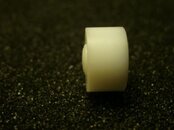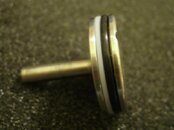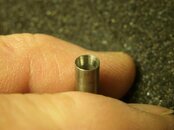Rainh2o
Registered
I recently bought a couple of what I found out to be TUSA Liberator 1st stage regs for 15 bucks at a yard sale. I figured this would be a great couple of learning regs to learn and understand repair on before tackling my good reg next year. Having the shop do it just drives me nuts since I do most every repair on everything else I have ever owned. I would like the knowledge that it is being done properly and no shortcuts...and maybe gain 2 more decent regs in the process...anyhow...
The TUSA's are balanced piston type and seemed to work OK but I did not dive with them or take any pressure readings yet. I know I need to get a gauge to measure the IP pressure still yet but I wanted to take one apart and take a look. Actually it looks real clean.
3 questions,
1) I understand TUSA wont sell kits to anyone but dealers, but is there another brand of regulator that has the same parts inside I could use? (Mainly seats)
2) There is a small O-ring inside the hole where the piston shaft passes through, I could get it out with a pick but how do you get them back in without damaging them? Do I need to get a special tool?
3) The seat on one I took apart looks OK but it has a small raised dimple on it in the middle where the piston lines up with and seals against. The inside of the piston has a tapered edge to it. Does the replacement seat have to have the same dimple or will a flat seat work in its place? (I'm thinking not?)
I didnt take the seat out of the other one yet, and prob wont unless I discover it has creep, I took the first one apart to confirm what it looked like and what parts may be inside.
If it helps identify what other kits may be useable from another clone, there is one o-ring on the piston along with a small plastic ring, an 0-ring inside the piston shaft hole (inside the main body), an o-ring under the seat and then 2 large O-rings, one on the LP section and one between the LP section and swivel head. The last pict is the end of the piston.



The TUSA's are balanced piston type and seemed to work OK but I did not dive with them or take any pressure readings yet. I know I need to get a gauge to measure the IP pressure still yet but I wanted to take one apart and take a look. Actually it looks real clean.
3 questions,
1) I understand TUSA wont sell kits to anyone but dealers, but is there another brand of regulator that has the same parts inside I could use? (Mainly seats)
2) There is a small O-ring inside the hole where the piston shaft passes through, I could get it out with a pick but how do you get them back in without damaging them? Do I need to get a special tool?
3) The seat on one I took apart looks OK but it has a small raised dimple on it in the middle where the piston lines up with and seals against. The inside of the piston has a tapered edge to it. Does the replacement seat have to have the same dimple or will a flat seat work in its place? (I'm thinking not?)
I didnt take the seat out of the other one yet, and prob wont unless I discover it has creep, I took the first one apart to confirm what it looked like and what parts may be inside.
If it helps identify what other kits may be useable from another clone, there is one o-ring on the piston along with a small plastic ring, an 0-ring inside the piston shaft hole (inside the main body), an o-ring under the seat and then 2 large O-rings, one on the LP section and one between the LP section and swivel head. The last pict is the end of the piston.






